Thinking outside the box
Design Thinking is an innovation method that puts people centre stage when developing new ideas. For the first time, ETH Zurich is offering master’s students in any field a course on this approach to innovation.
Specialist knowledge on its own is often not enough to hold one’s own against global competition. It’s becoming ever more important to think outside the box: in the development of new product ideas, there is a growing need for interdisciplinary thinking and working. Now master’s students at ETH Zurich will be able to acquire precisely these skills on a newly developed master’s course entitled “Design Thinking: Human-centred solutions to real-world challenges”. One of its co-initiators is Professor Mirko Meboldt of the Department of Mechanical and Process Engineering: “Our goal is to get students from as many different faculties as possible to take part, so they learn how to collaborate, share knowledge across disciplines and ultimately work together to develop innovative solutions.”
Students taking the course will be expected to apply the principles of Design Thinking, an innovation method developed at Stanford University’s Hasso Plattner Institute of Design – known as the “d.school” – with the collaboration of Hasso Plattner Institute in Potsdam. Aside from its interdisciplinary character, what distinguishes this method is that it puts people, not technology, centre stage in the creation of new products, the aim being to come up with user-oriented solutions. This course is in line with the Critical Thinking initiative that ETH launched at the end of 2013 in order to teach students critical thinking and analysis skills alongside specialist expertise. The master’s course was initiated by Spark Labs, which was recently founded to promote teaching and coaching in the field of Design Thinking.
Spark Labs was dreamed up by Dr Alan Cabello, a lecturer in innovation management at ETH and EPFL, and Dr Florian Rittiner, a visiting researcher at Meboldt’s department. They brought their idea to life together with Stefano Brusoni, a professor of technology and innovation management at ETH’s Department of Management, Technology and Economics, and Chris Tucci, who holds the Chair in Corporate Strategy & Innovation at EPFL. Brusoni is one of the initiators of the Design Thinking course, along with Meboldt and Christoph Hölscher, a professor of cognitive science at ETH’s Department of Humanities, Social and Political Sciences. EPFL is also offering a Design Thinking course with a view to building up a network across Switzerland.
Putting people centre stage
“Design Thinking follows a five-step process, and the first step is to get to know future customers and their needs,” says Rittiner, who will in future lead the course together with Cabello. According to Rittiner, it’s important for participants to supplement their understanding of the customer by getting to grips with how various disciplines see and do things – something they will have a chance to do in small interdisciplinary teams. “In an IT project, for instance, a biologist or doctor will have a different perspective and pose different questions, so the solution will be entirely different from one developed by IT specialists alone,” he explains, adding that this kind of exchange can take place only when various disciplines have learnt how to communicate with each other – a process that is seldom easy.
Another important aspect of the Design Thinking method is developing a prototype. “That way, ideas become tangible,” explains Rittiner. A room has been set aside especially for this course so that students have somewhere they can build their prototypes. The room is courtesy of the Department of Mechanical and Process Engineering, which offered a workshop on Leonhardstrasse used by first-year mechanical engineering students for their innovation project every spring. Following several weeks of renovation work, this repurposed workshop now houses what is known as the LEO Loft: a multifunctional teaching space with workshop areas, stations for group work and an area dedicated to lectures. This versatile room has already met with a great deal of interest; in fact, various study groups held seminars there even before the semester had started. Once the Design Thinking course ends in December, however, the current plan is to turn the room back into a workshop in time for the spring semester.
Master's Course Design Thinking
-
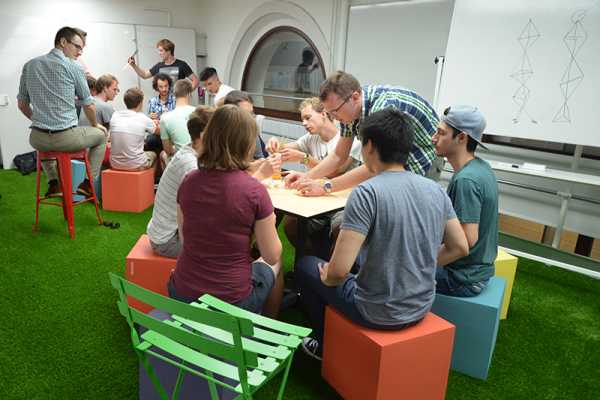
Students put into practice what they have planned on the whiteboard. -
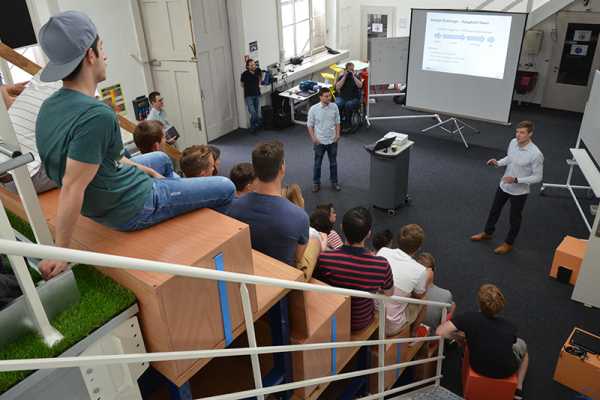
Reflection at the end of an learning unit. -
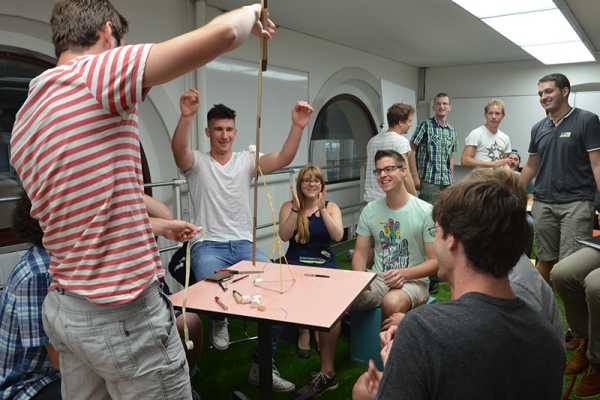
The spaghetti tower is withstanding the weight of the marshmallow: The experiment was a success! -
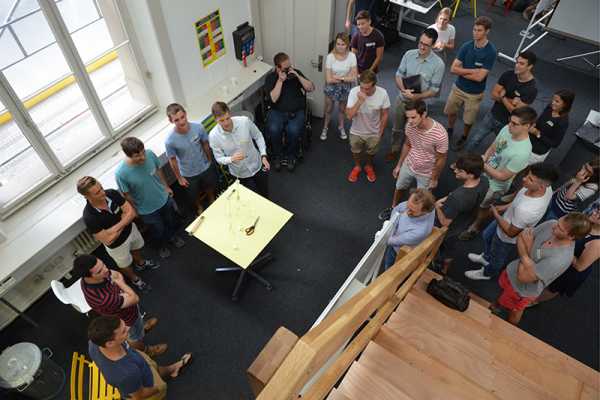
Peer learning: students look at the structure of their fellow students. -
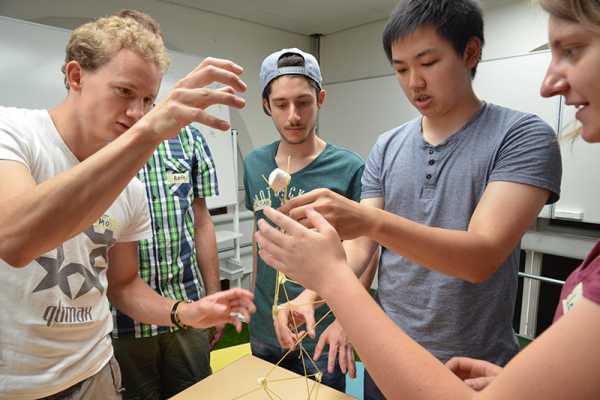
Total concentration: Is the construction going to collapse after all?
Course structure and registration
The three-month master’s course in “Design Thinking: Human-centred solutions to real-world challenges” will comprise three projects lasting one, three and six weeks respectively. The six-week project will see interdisciplinary teams working together with a partner company to solve a real-world problem using Design Thinking. The course is open to master’s students in all departments. Participation is limited to 30 students; the language of instruction is English. When registering for the course, students should state not only their faculty but also their personal interests, as these are just as important for the innovation process in Design Thinking. Registration should be sent to Florian Rittiner (frittiner@ethz.ch) by 7 September 2015. Further information at www.sparklabs.ethz.ch.
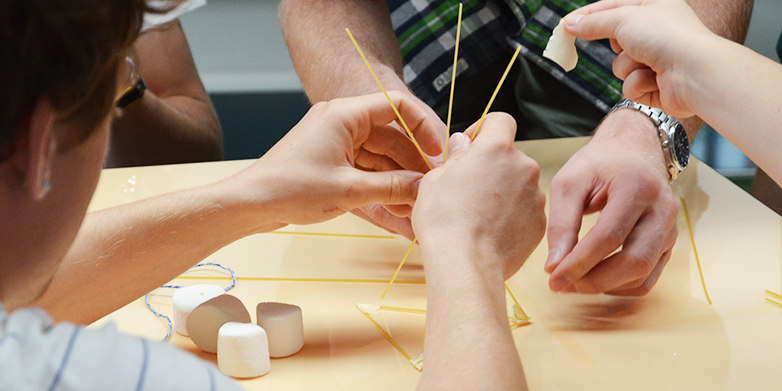
Comments
No comments yet